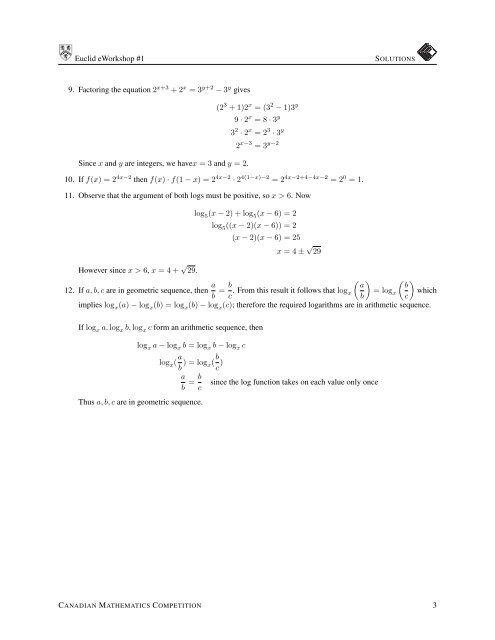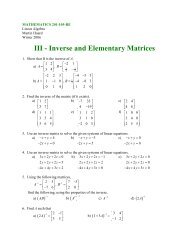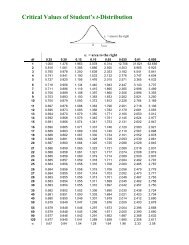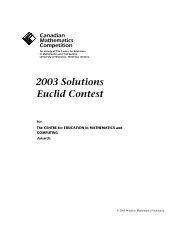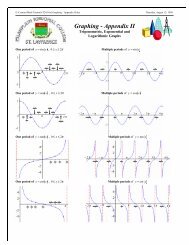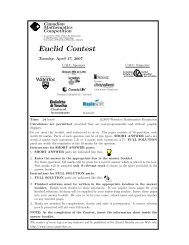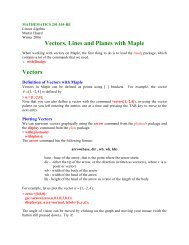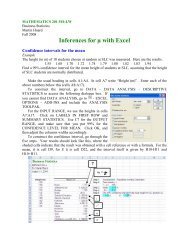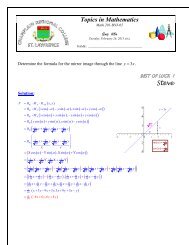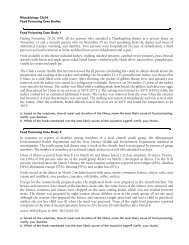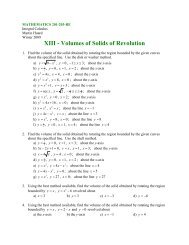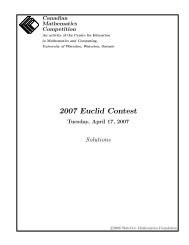view solutions - CEMC - University of Waterloo
view solutions - CEMC - University of Waterloo
view solutions - CEMC - University of Waterloo
You also want an ePaper? Increase the reach of your titles
YUMPU automatically turns print PDFs into web optimized ePapers that Google loves.
Euclid eWorkshop #1SOLUTIONS9. Factoring the equation 2 x+3 + 2 x = 3 y+2 − 3 y givesSince x and y are integers, we havex = 3 and y = 2.(2 3 + 1)2 x = (3 2 − 1)3 y9 · 2 x = 8 · 3 y3 2 · 2 x = 2 3 · 3 y2 x−3 = 3 y−210. If f(x) = 2 4x−2 then f(x) · f(1 − x) = 2 4x−2 · 2 4(1−x)−2 = 2 4x−2+4−4x−2 = 2 0 = 1.11. Observe that the argument <strong>of</strong> both logs must be positive, so x > 6. Nowlog 5 (x − 2) + log 5 (x − 6) = 2log 5 ((x − 2)(x − 6)) = 2(x − 2)(x − 6) = 25x = 4 ± √ 29However since x > 6, x = 4 + √ 29.12. If a, b, c are in geometric sequence, then a b = b ( ) ( )a bc . From this result it follows that log x = logb x whichcimplies log x (a) − log x (b) = log x (b) − log x (c); therefore the required logarithms are in arithmetic sequence.If log x a, log x b, log x c form an arithmetic sequence, thenlog x a − log x b = log x b − log x clog x ( a b ) = log x( b c )ab = b cThus a, b, c are in geometric sequence.since the log function takes on each value only onceCANADIAN MATHEMATICS COMPETITION 3


